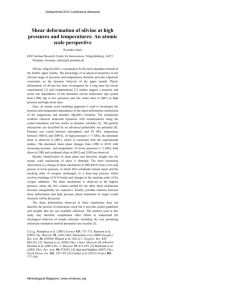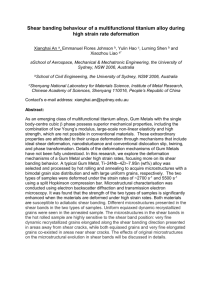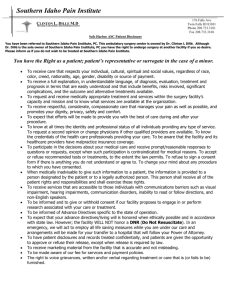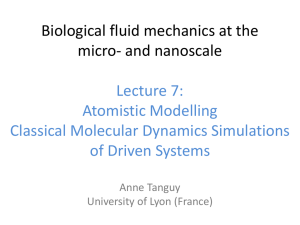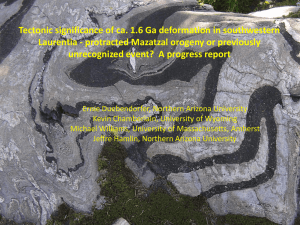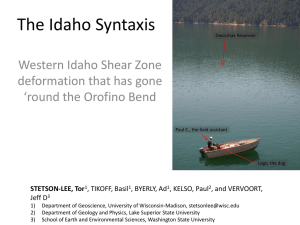Granulites & Granulites 2006 Abstract Form
advertisement
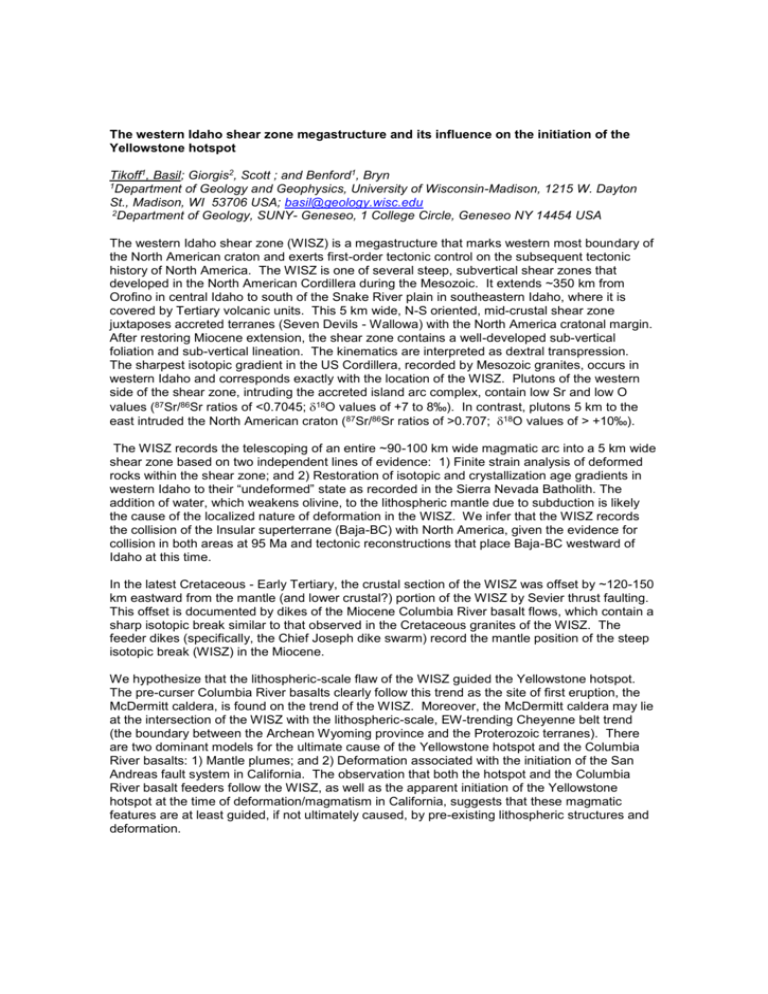
The western Idaho shear zone megastructure and its influence on the initiation of the Yellowstone hotspot Tikoff1, Basil; Giorgis2, Scott ; and Benford1, Bryn 1Department of Geology and Geophysics, University of Wisconsin-Madison, 1215 W. Dayton St., Madison, WI 53706 USA; basil@geology.wisc.edu 2Department of Geology, SUNY- Geneseo, 1 College Circle, Geneseo NY 14454 USA The western Idaho shear zone (WISZ) is a megastructure that marks western most boundary of the North American craton and exerts first-order tectonic control on the subsequent tectonic history of North America. The WISZ is one of several steep, subvertical shear zones that developed in the North American Cordillera during the Mesozoic. It extends ~350 km from Orofino in central Idaho to south of the Snake River plain in southeastern Idaho, where it is covered by Tertiary volcanic units. This 5 km wide, N-S oriented, mid-crustal shear zone juxtaposes accreted terranes (Seven Devils - Wallowa) with the North America cratonal margin. After restoring Miocene extension, the shear zone contains a well-developed sub-vertical foliation and sub-vertical lineation. The kinematics are interpreted as dextral transpression. The sharpest isotopic gradient in the US Cordillera, recorded by Mesozoic granites, occurs in western Idaho and corresponds exactly with the location of the WISZ. Plutons of the western side of the shear zone, intruding the accreted island arc complex, contain low Sr and low O values (87Sr/86Sr ratios of <0.7045;18O values of +7 to 8‰). In contrast, plutons 5 km to the east intruded the North American craton (87Sr/86Sr ratios of >0.707;18O values of > +10‰). The WISZ records the telescoping of an entire ~90-100 km wide magmatic arc into a 5 km wide shear zone based on two independent lines of evidence: 1) Finite strain analysis of deformed rocks within the shear zone; and 2) Restoration of isotopic and crystallization age gradients in western Idaho to their “undeformed” state as recorded in the Sierra Nevada Batholith. The addition of water, which weakens olivine, to the lithospheric mantle due to subduction is likely the cause of the localized nature of deformation in the WISZ. We infer that the WISZ records the collision of the Insular superterrane (Baja-BC) with North America, given the evidence for collision in both areas at 95 Ma and tectonic reconstructions that place Baja-BC westward of Idaho at this time. In the latest Cretaceous - Early Tertiary, the crustal section of the WISZ was offset by ~120-150 km eastward from the mantle (and lower crustal?) portion of the WISZ by Sevier thrust faulting. This offset is documented by dikes of the Miocene Columbia River basalt flows, which contain a sharp isotopic break similar to that observed in the Cretaceous granites of the WISZ. The feeder dikes (specifically, the Chief Joseph dike swarm) record the mantle position of the steep isotopic break (WISZ) in the Miocene. We hypothesize that the lithospheric-scale flaw of the WISZ guided the Yellowstone hotspot. The pre-curser Columbia River basalts clearly follow this trend as the site of first eruption, the McDermitt caldera, is found on the trend of the WISZ. Moreover, the McDermitt caldera may lie at the intersection of the WISZ with the lithospheric-scale, EW-trending Cheyenne belt trend (the boundary between the Archean Wyoming province and the Proterozoic terranes). There are two dominant models for the ultimate cause of the Yellowstone hotspot and the Columbia River basalts: 1) Mantle plumes; and 2) Deformation associated with the initiation of the San Andreas fault system in California. The observation that both the hotspot and the Columbia River basalt feeders follow the WISZ, as well as the apparent initiation of the Yellowstone hotspot at the time of deformation/magmatism in California, suggests that these magmatic features are at least guided, if not ultimately caused, by pre-existing lithospheric structures and deformation.
